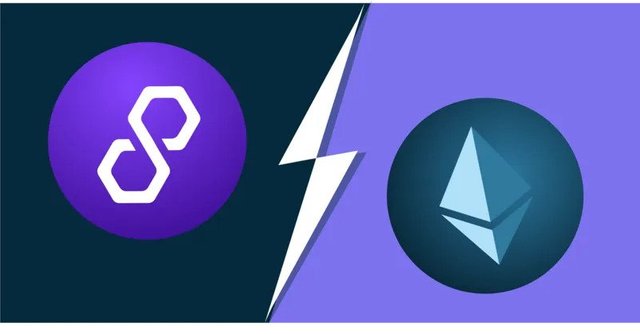In the world of blockchain technology, Layer 1 and Layer 2 are fundamental concepts, each playing a unique role in the functioning and development of blockchain networks. Layer 1 serves as the foundational backbone of every blockchain network, while Layer 2 solutions offer innovative approaches to overcome the challenges that arise at the base level. During a bull run, a period when crypto market prices tend to rise, the question arises: Which layer will perform better? This article examines the functions and characteristics of Layer 1 and Layer 2 and analyzes their potential performance during a bull run.

Features of Layer 1
Layer 1 refers to the base level of a blockchain. It sets the main rules of the network, including consensus mechanisms and the fundamental way transactions are recorded and verified. Examples of Layer 1 solutions include well-known blockchains like Bitcoin and Ethereum.
Security and Decentralization
Security and decentralization are the key aspects of Layer 1. This layer ensures that transactions are secure and immutable. Consensus mechanisms such as Proof of Work (PoW) or Proof of Stake (PoS) play a central role in maintaining the integrity of the network. During a bull run, the robust security architecture of Layer 1 is crucial as it strengthens investor confidence.
Scalability and Performance
A frequently discussed issue concerning Layer 1 is scalability. Since all transactions are processed directly on the blockchain, problems such as network congestion and high transaction fees can occur, especially during times of high demand like in a bull run. Projects like Ethereum 2.0 aim to tackle these challenges by transitioning to a more efficient consensus mechanism and introducing sharding.
Features of Layer 2
Layer 2 refers to technologies built on top of the basic blockchain (Layer 1) to enhance its efficiency and scalability. These solutions are developed to overcome the limitations of Layer 1, particularly in terms of transaction speed and costs.
Layer 2 Scaling Solutions
Prominent Layer 2 solutions include State Channels, Sidechains, and Rollups. These technologies allow transactions to be processed off the main blockchain, reducing the burden on Layer 1 and enabling faster transaction processing. These properties are particularly advantageous during a bull run when the network must withstand increased transaction volumes.
Advantages of Layer 2 Over Layer 1
The main advantages of Layer 2 solutions lie in their ability to offer high transaction speeds while keeping fees low. This makes them particularly attractive for applications requiring high scalability, such as DeFi platforms or NFT marketplaces. In a bull run, Layer 2 solutions could thus play a crucial role in efficiently utilizing network capacity and enhancing user experiences.
Comparison and Performance in a Bull Run
In a bull run, when interest and activity in the crypto market increase, the strengths and weaknesses of Layer 1 and Layer 2 become particularly evident. This section compares both layers in terms of their performance during such market phases.
Performance Analysis in Historical Context
Historical data shows that Layer 1 networks often face challenges such as network congestion and rising transaction fees in bull runs. This can lead to delays and poorer user experience. Layer 2 solutions, on the other hand, are designed to circumvent such problems by speeding up transaction processing and reducing costs.
Future Projections and Market Potential
Although Layer 1 networks are indispensable as the foundation of blockchain technology, Layer 2 solutions could play an increasingly important role in the future, especially when it comes to scaling and handling large transaction volumes. In a bull run, Layer 2 solutions could therefore show better performance, offering more efficient transaction processing and improved user experiences.
Conclusion
The analysis of Layer 1 and Layer 2 demonstrates that both layers are essential for the blockchain ecosystem, each excelling in different aspects. Layer 1 forms the foundation focusing on security and decentralization, while Layer 2 shines in high phases like bull runs through its scaling solutions and efficiency. During such times, Layer 2 solutions reveal their full potential by effectively addressing the challenges of Layer 1, such as network congestion and high fees. For investors and enthusiasts, it is therefore important to understand and follow the developments of both layers. In the long run, investments in Layer 2 technologies could be particularly rewarding due to their scalability potential and ability to improve user experience. Nevertheless, the fundamental role of Layer 1 networks as the backbone of the entire blockchain ecosystem remains indispensable. A balanced understanding of both layers is thus crucial for assessing their performance, especially in dynamic market phases like bull runs.
For me, layer 2 are like junior brothers to layer 1. Although they have worked on making a more efficient and scalable version of layer 1. But Im still sure that layer1s will perform better because they are the main and layer2s are like sub main. Although, Ive been using Bitget smart portfolio to pair some Layer1 coins such as ETH, KAS and other to layers 2 coins like Matic, Arb and optimism to earn my of these layer 2 coins. Hopefully, I'm gonna make more profits with this idea when bull market comes. Although, I'm getting some good APY doing so.
Downvoting a post can decrease pending rewards and make it less visible. Common reasons:
Submit